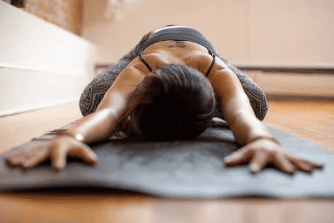Hot yoga is a way of life that has seen a surge in the fitness world. Hot yoga can be attributed to Bikram Choudhury, an Indian yoga instructor, who developed the method in the early 1970s. Bikram yoga consists of 26 postures and two breathing exercises. These exercises are performed in a room that is 105 degrees Fahrenheit with a humidity level of 40%. Choudhury believed that the heat and humidity helped loosen muscles and release toxins from the body. The practice of hot yoga helps us to relieve stress, sculpt lean and long muscles, increase flexibility and improve circulation. It also reduces blood glucose levels, enhances focus, nourishes the skin and provides stress relief. It is also known to heal chronic pain such as joint, knee, and back pain.
As Shape.com states, “According to one study review, the potential health benefits of Bikram yoga include improved glucose tolerance (a better ability to process sugar), blood lipid profile (a measure of cholesterol and fats in blood) and bone density.” Healthline.com mentions that in a 2014 study, premenopausal women had increased bone density in some areas after practicing hot yoga. This leads some to believe that hot yoga may reduce the risk of osteoporosis.
The Bikram method of hot yoga is not the only one practiced. Some of the variations are Hot Vinyas, Power Hot Yoga, and Hot Yin Yoga. These types of yoga share the goal of providing benefits of hot yoga through the heat and humidity in the room.
It is also important to approach your hot yoga practice responsibly. Staying hydrated, listening to your body, minding your breath, dressing appropriately and preparing for recovery are very important. Conscious breathing is important during hot yoga. Focus on deep, steady breaths to regulate your body temperature. After your practice, it is important to take a resting break with a savasana by laying down with your back on the mat and closing your eyes.
Some of the safety tips include: stay hydrated by taking small sips of water. If you have heart disease, diabetes or a history of fainting, you are more likely to pass out during class. Also, you should stop your practice immediately, leave the room and rest if you are feeling dizzy or nauseous.
Hot yoga provides a challenging approach to yoga and it has something to offer yogis of all levels. But, like any form of exercise, it is important to approach hot yoga with respect for your body and a willingness to listen to its prompts.
Hot yoga is more than just a workout – it’s a comprehensive practice that promotes physical, mental, and emotional well-being. From increased flexibility and improved circulation to potential benefits for bone density and stress relief, its advantages are extensive. However, these benefits come with the responsibility of practicing safely and mindfully. Whether you’re a seasoned yogi or a curious beginner, hot yoga can be a transformative addition to your wellness routine when approached with care, preparation, and self-awareness.

